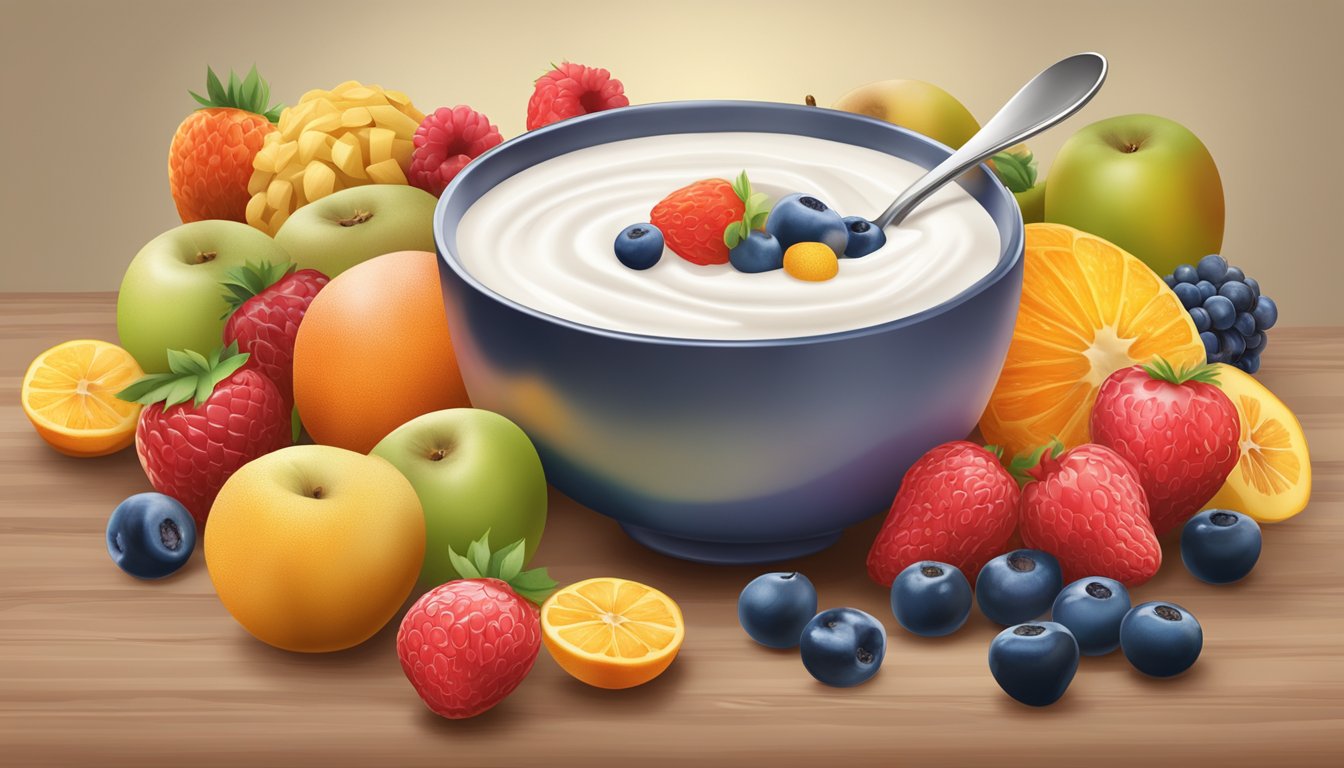Breakfast cereal can be a convenient way to boost your daily fiber intake. Many popular cereals now offer high-fiber options to meet growing consumer demand for healthier breakfast choices. Fiber One from General Mills tops the list with an impressive 18 grams of fiber per 2/3 cup serving.
Dietary fiber plays a crucial role in digestive health and can help manage weight, blood sugar levels, and cholesterol. The recommended daily fiber intake is 25-30 grams for most adults. Choosing a high-fiber breakfast cereal provides a significant portion of this daily requirement in just one meal.
Other cereals that pack a fiber punch include Kellogg’s All-Bran Buds with 17 grams per 1/2 cup and Barbara’s High Fiber Original with 14 grams per cup. When shopping for high-fiber cereals, look for options containing at least 5 grams of fiber per serving. Reading nutrition labels carefully helps identify cereals that deliver substantial fiber without excessive added sugars.
Understanding Dietary Fiber
Dietary fiber is an essential component of a healthy diet, providing numerous benefits for digestion and overall health. It comes in two main forms and has specific intake recommendations.
The Role of Fiber in the Diet
Dietary fiber plays a crucial role in maintaining digestive health and promoting overall well-being. It aids in regular bowel movements, prevents constipation, and supports a healthy gut microbiome.
Fiber helps control blood sugar levels by slowing down digestion and absorption of carbohydrates. This can be particularly beneficial for people with diabetes or those at risk of developing the condition.
It also contributes to heart health by helping lower cholesterol levels and reducing the risk of cardiovascular disease. Additionally, fiber-rich foods tend to be more filling, which can assist with weight management and appetite control.
Soluble vs Insoluble Fiber
Dietary fiber is categorized into two main types: soluble and insoluble. Each type offers unique benefits to the body.
Soluble fiber:
- Dissolves in water to form a gel-like substance
- Helps lower cholesterol and blood sugar levels
- Found in oats, barley, nuts, seeds, and some fruits and vegetables
- Does not dissolve in water
- Adds bulk to stool and promotes regular bowel movements
- Found in whole grains, wheat bran, and many vegetables
Most plant-based foods contain a mix of both soluble and insoluble fiber, providing a range of health benefits. Consuming a variety of fiber sources ensures a balanced intake of both types.
Recommended Daily Fiber Intake
The recommended daily intake of fiber varies based on age and gender. For adults, the general guidelines are:
- Men: 30-38 grams per day
- Women: 21-25 grams per day
These recommendations are based on a 2,000-calorie diet and may need adjustment for different calorie intakes. Children also require fiber, with needs increasing as they grow older.
Meeting the daily fiber intake can be challenging for some people. Gradually increasing fiber consumption and staying hydrated can help prevent discomfort. Choosing high-fiber cereals, whole grains, fruits, vegetables, and legumes can significantly contribute to reaching the recommended daily intake.
Health Benefits of High-Fiber Cereals
High-fiber cereals offer numerous health advantages, supporting digestive function, cardiovascular health, blood sugar regulation, and weight management. These cereals provide essential nutrients and promote overall wellness through their fiber content.
Impact on Digestive Health
High-fiber cereals play a crucial role in maintaining digestive health. They add bulk to stool, promoting regular bowel movements and preventing constipation. The fiber in these cereals acts as a prebiotic, feeding beneficial gut bacteria and supporting a healthy microbiome.
Consuming high-fiber cereals can help alleviate common digestive issues like bloating and discomfort. The insoluble fiber in whole grains aids in moving waste through the intestines more efficiently. This process helps detoxify the body and may reduce the risk of developing digestive disorders.
Regular intake of fiber-rich cereals can also contribute to improved nutrient absorption. By slowing digestion, these cereals allow more time for the body to extract essential vitamins and minerals from food.
Cholesterol and Heart Health
High-fiber cereals can significantly impact cholesterol levels and heart health. Soluble fiber, found in oats and barley, forms a gel-like substance in the digestive tract. This gel binds to cholesterol particles and helps remove them from the body.
Studies have shown that consuming fiber-rich cereals can lower LDL (bad) cholesterol levels by up to 10%. This reduction in cholesterol can decrease the risk of heart disease and stroke. The fiber in these cereals also helps maintain healthy blood pressure levels.
Many high-fiber cereals contain whole grains, which are rich in antioxidants and other heart-protective compounds. These nutrients work together to reduce inflammation and oxidative stress, further supporting cardiovascular health.
Blood Sugar Control and Diabetes
High-fiber cereals can be beneficial for managing blood sugar levels and reducing the risk of type 2 diabetes. The fiber in these cereals slows down the absorption of sugar, preventing rapid spikes in blood glucose.
This slower absorption helps maintain steady energy levels throughout the day. It also reduces the strain on the pancreas to produce insulin, which can be particularly beneficial for individuals with diabetes or prediabetes.
Some studies suggest that consuming high-fiber cereals regularly may lower the risk of developing type 2 diabetes by up to 20%. The combination of fiber and whole grains in these cereals improves insulin sensitivity and glucose metabolism.
Weight Management and Satiety
High-fiber cereals can be an effective tool for weight management. The fiber in these cereals absorbs water and expands in the stomach, creating a feeling of fullness and reducing overall calorie intake.
This increased satiety can help control appetite and prevent overeating throughout the day. Fiber-rich cereals also tend to be lower in calories compared to their low-fiber counterparts, making them a smart choice for those watching their weight.
The slow digestion of high-fiber cereals helps maintain stable blood sugar levels, reducing cravings and preventing energy crashes. This steady energy release can support better food choices and portion control throughout the day.
Top High-Fiber Cereal Choices
Several breakfast cereals stand out for their impressive fiber content, offering nutritional benefits while satisfying hunger. Some options balance high fiber with low sugar, while others incorporate whole grains for added health value.
Overall Fiber Leaders
Fiber One Original tops the list with an impressive 18 grams of fiber per 1/2 cup serving. This cereal provides over half the daily recommended fiber intake in one small portion.
All-Bran Original follows closely, offering 10 grams of fiber per 1/2 cup. Its wheat bran base contributes to digestive health and regularity.
Kashi GO delivers 13 grams of fiber per serving, combining whole grains and added fiber sources. This cereal also provides a good balance of protein and healthy fats.
Low-Sugar High-Fiber Options
For those watching sugar intake, Shredded Wheat offers 6 grams of fiber per serving with zero grams of sugar. Its simple ingredient list features only whole grain wheat.
Barbara’s Puffins Protein delivers 8 grams of fiber and only 2 grams of sugar per serving. This cereal combines corn and sorghum for a crunchy, lightly sweet taste.
Uncle Sam Original provides 10 grams of fiber with just 1 gram of sugar per serving. Its blend of whole wheat kernels and flaxseed offers omega-3 fatty acids as well.
Whole Grain High-Fiber Cereals
Great Grains Crunchy Pecan cereal contains 5 grams of fiber per serving. Its mix of whole grains, nuts, and dried fruit provides a variety of textures and flavors.
Raisin Bran, a classic choice, offers 7 grams of fiber per serving. The combination of whole wheat flakes and raisins contributes both fiber and natural sweetness.
Nature’s Path Flax Plus Multibran provides 9 grams of fiber per serving. This cereal incorporates multiple whole grains and seeds for a nutrient-dense breakfast option.
Evaluating Cereal Nutrition Labels

Reading nutrition labels is crucial for choosing high-fiber cereals. Key factors to consider include fiber content, added sugars, and serving sizes.
Fiber Content Analysis
Fiber content is the most important factor when selecting high-fiber cereals. Look for cereals with at least 5 grams of fiber per serving. Some cereals provide up to 14 grams per serving, which is over half the daily recommended intake for women.
Top-tier high-fiber cereals may contain 10-15 grams per serving. These often use ingredients like bran, whole grains, and added fiber sources.
Mid-range options typically offer 5-9 grams of fiber per serving. These can still contribute significantly to daily fiber intake.
Identifying Added Sugars
Many high-fiber cereals contain added sugars to improve taste. The nutrition label lists “Added Sugars” separately from total sugars.
Aim for cereals with less than 5 grams of added sugar per serving. Some brands offer options with 1 gram or less.
Be cautious of terms like “honey,” “maple,” or “brown sugar” in the ingredients list. These indicate added sugars.
Understanding Serving Sizes
Serving sizes vary widely among cereal brands. A typical serving ranges from 30 to 55 grams.
Compare fiber content based on equal serving sizes. Some brands may appear to have more fiber but actually have larger serving sizes.
Pay attention to volume measurements. A serving might be listed as 3/4 cup for one brand and 1 cup for another.
Consider personal portion sizes. If you typically eat more than the listed serving, adjust the nutrient values accordingly.
Incorporating High-Fiber Cereals into Your Diet
High-fiber cereals offer a nutritious start to the day. These cereals can be combined with other foods to create balanced meals and snacks that boost fiber intake throughout the day.
Balanced Breakfast Ideas
Mix high-fiber cereal with Greek yogurt and fresh berries for a protein-packed meal. Top whole grain cereal with sliced banana and a splash of low-fat milk. Pair bran flakes with chopped nuts and dried fruit for added crunch and sweetness.
For a warm option, cook steel-cut oats with cinnamon and top with diced apples. Blend fiber-rich cereal into smoothies for a filling drink. Create a parfait by layering high-fiber cereal, yogurt, and fruit in a glass.
Mixing Cereals for Optimal Nutrition
Combine different high-fiber cereals to vary textures and flavors. Mix bran flakes with granola for a crunchy blend. Pair wheat bran cereal with fruit-flavored options for natural sweetness.
Add psyllium-based cereals to other varieties for an extra fiber boost. Mix in puffed whole grains for volume without excess calories. Combine protein-rich cereals with high-fiber options for a balanced meal.
Create custom blends by mixing cereals with different nutritional profiles. Store mixed cereals in airtight containers for quick, ready-to-eat options.
Combining with Other Fiber Sources
Sprinkle chia seeds or ground flaxseed over cereal for additional fiber. Add sliced almonds or chopped walnuts to increase protein and healthy fats. Mix in fresh or frozen berries for natural sweetness and extra nutrients.
Top cereal with sliced vegetables like carrots or zucchini for a unique twist. Use high-fiber cereal as a crunchy topping for yogurt or cottage cheese. Incorporate beans by adding a small portion of cooked lentils to savory breakfast bowls.
Create homemade trail mix using high-fiber cereal, dried fruits, and nuts for a portable snack. Use crushed fiber-rich cereal as a coating for baked chicken or fish.
Special Considerations

Selecting high-fiber cereals requires attention to individual dietary needs and preferences. Certain factors can impact cereal choices, including specific diets, allergies, and production methods.
Cereal for Special Diets
Many high-fiber cereals cater to specific dietary requirements. Gluten-free options often use rice, corn, or quinoa as base ingredients. For those following a low-sugar diet, cereals sweetened with natural alternatives like stevia or monk fruit are available. Vegan-friendly cereals avoid animal-derived ingredients such as honey or milk proteins.
Plant-based milk alternatives pair well with high-fiber cereals for those avoiding dairy. Options like almond, soy, or oat milk can enhance the nutritional profile of the breakfast.
Some cereals are fortified with additional nutrients like vitamin D, which is beneficial for those with limited sun exposure or following plant-based diets.
Allergies and Intolerances
Individuals with food allergies or intolerances must carefully check cereal ingredients. Common allergens in cereals include nuts, wheat, and soy. Many brands offer allergen-free options, clearly labeling their products to help consumers make informed choices.
Cross-contamination can be a concern for those with severe allergies. Some manufacturers produce cereals in dedicated allergen-free facilities to minimize this risk.
For those with lactose intolerance, choosing lactose-free milk or plant-based alternatives ensures a comfortable breakfast experience.
Choosing Organic and Non-GMO Options
Organic cereals are produced without synthetic pesticides or fertilizers. These options may appeal to consumers concerned about chemical residues in their food.
Non-GMO cereals are made without genetically modified ingredients. Some brands, like Purely Elizabeth, offer organic, non-GMO options such as their Honey Peanut Butter Superfood Cereal.
When selecting organic or non-GMO cereals, look for certified labels from recognized organizations. These certifications provide assurance that the product meets specific standards.
Organic whole grain cereals can be excellent sources of fiber and other nutrients. They often contain a variety of grains and seeds, contributing to a diverse nutrient profile.
Conclusion

Fiber-rich breakfast cereals offer numerous health benefits. They aid digestion, promote feelings of fullness, and support heart health.
To increase fiber intake, choose cereals with at least 5 grams per serving for women and 7.5 grams for men. Top choices include All-Bran, Fiber One, and Uncle Sam Cereal.
Reading nutrition labels helps identify high-fiber options. Aim for a daily fiber goal of 25-30 grams for adults.
Combining high-fiber cereals with fruits, nuts, or seeds provides an extra fiber boost. This simple change can significantly impact overall health and well-being.
Remember, gradually increasing fiber intake and staying hydrated are key to maximizing fiber benefits. With so many tasty options available, reaching fiber goals through breakfast cereals is both achievable and enjoyable.




